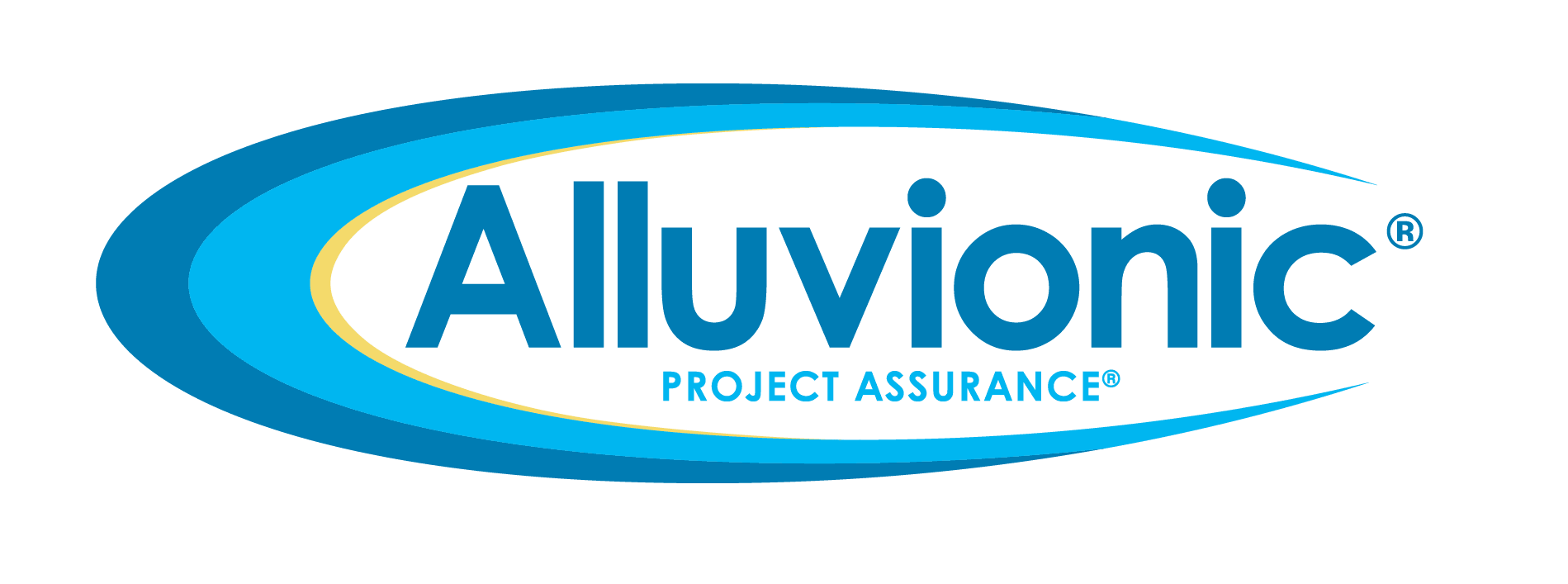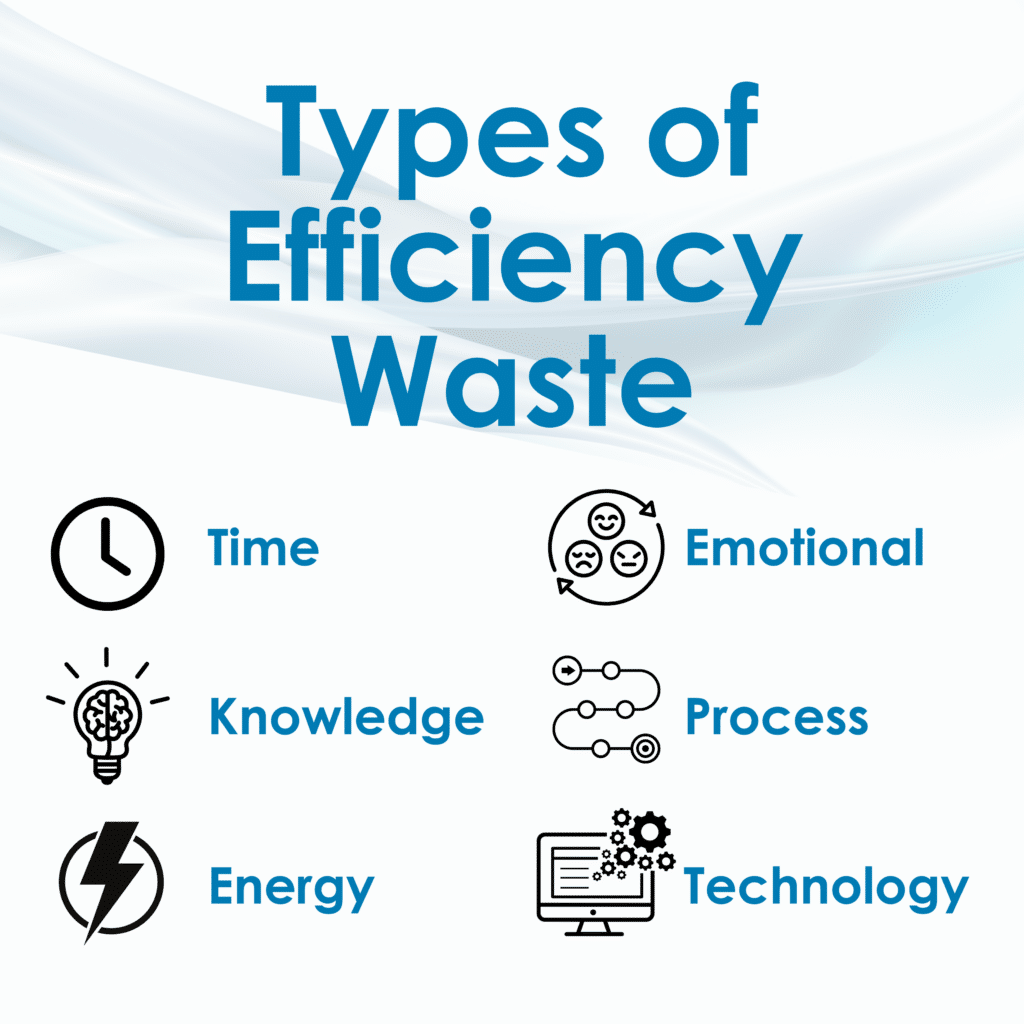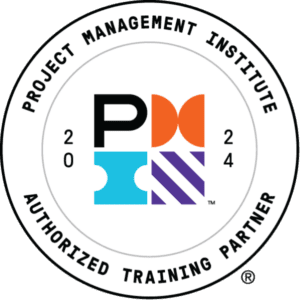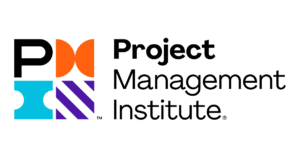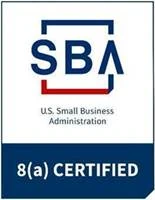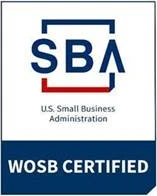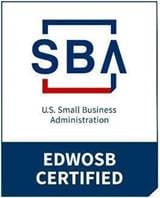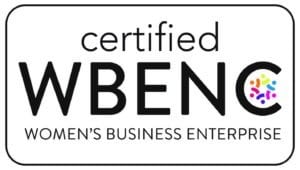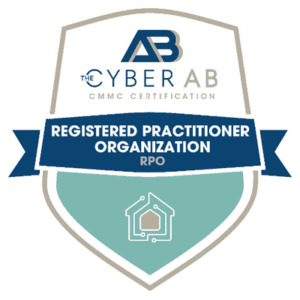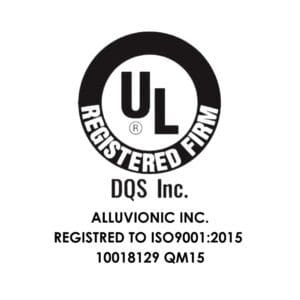Businesses love to talk about efficiency, but let’s be real—most are bleeding time and money in ways they don’t even notice. With the new administration prioritizing streamlined government operations, now is the perfect time to take a hard look at your own processes.
Hidden inefficiencies quietly drain productivity, drive up costs, and chip away at employee morale. They don’t show up as a line item on financial statements, but their impact on performance is undeniable. In this article, we’ll uncover six common inefficiencies, show you how to identify and measure them, and share practical strategies to eliminate waste—or even turn it into an opportunity for growth.
What is Invisible Waste in the Workplace?
Invisible waste refers to inefficiencies in a business that aren’t always visible, but still result in lost resources—time, energy, talent, and money. Invisible waste is often embedded in the systems and behaviors of an organization. These inefficiencies can be categorized into several types:
- Time Waste: Wasting valuable time through inefficiency, such as excessive meetings, redundant processes, or delayed decision-making.
- Knowledge Waste: Expertise or valuable information that isn’t properly shared across teams or organizations.
- Energy Waste: Physical or mental energy expended on tasks that are inefficient or misaligned with the organization’s goals.
- Emotional Waste: Stress, disengagement, and frustration experienced by employees due to unclear roles, unrecognized efforts, or toxic workplace culture.
- Process Waste: Redundant, slow, or unnecessary steps in a business process that don’t add value but consume resources.
- Technology Waste: Inefficient use of technology tools, software, or systems that could otherwise optimize performance and productivity.
Types of Invisible Waste, Identification, and Their Impact
1. Time Waste
What it is: Time waste happens when employees spend excessive time on unproductive tasks, such as unnecessary meetings, redundant approvals, or having to redo work due to poor planning.
How to Identify It:
- Time audits: Track how much time employees spend on various tasks. Look for patterns like extended time spent in meetings or delays in decision-making.
- Employee surveys: Ask employees directly where they feel their time is being wasted.
- Project timelines: Analyze delays or missed deadlines as indicators of time inefficiencies.
Impacts:
- Reduced productivity: Wasted time means less time for important tasks, which affects overall output.
- Increased stress: Reworking tasks or delays due to inefficient processes can increase employee stress and burnout.
- Higher costs: Time wasted on unimportant tasks can translate into more labor costs and slower delivery times.
Best Practices to Address It:
- Implement time tracking tools: Tools like Toggl, RescueTime, or Clockify help track how much time is spent on specific tasks.
- Optimize meetings: Make meetings short and to the point, and only involve those necessary.
- Focus on results, not hours worked: Encourage outcome-based performance over micromanaging time.
2. Knowledge Waste
What it is: Knowledge waste happens when valuable information or expertise is not shared, communicated, or utilized effectively, leading to missed opportunities, inefficiencies, or repeated mistakes.
How to Identify It:
- Lack of collaboration: If teams are working in silos and not sharing relevant insights, this could point to knowledge waste.
- Redundant work: If similar tasks or decisions are repeated by different teams without leveraging previous work or knowledge, it’s a sign of inefficiency.
- Employee turnover: When employees leave, knowledge may leave with them unless proper knowledge transfer protocols are in place.
Impacts:
- Increased errors: Repeated mistakes due to lack of knowledge sharing can degrade the quality of work.
- Slower decision-making: Without shared knowledge, teams may spend extra time trying to gather information that already exists within the organization.
- Lost innovation: Without collaboration, innovative ideas and solutions can remain untapped.
Best Practices to Address It:
- Create knowledge-sharing platforms: Use tools like Confluence, Notion, or SharePoint to centralize resources and facilitate knowledge exchange.
- Regular cross-team meetings: Set up structured knowledge-sharing sessions between departments to ensure information flows smoothly.
- Documentation and training: Encourage thorough documentation of processes and create a culture of continuous learning.
3. Energy Waste
What it is: Energy waste refers to both physical and mental energy spent on inefficient or unnecessary tasks that drain employee resources without adding value to the organization.
How to Identify It:
- Employee surveys: Ask employees where they feel overwhelmed or drained in their roles.
- Performance dips: Consistent low productivity or engagement can indicate that employees are mentally exhausted or disillusioned with inefficient systems.
- High absenteeism: Employees who are burned out or feel unproductive may call in sick more often.
Impacts:
- Lower productivity: Employees will become less effective as they tire from inefficient workflows or poorly designed tasks.
- Higher burnout rates: Energy waste can contribute to mental and emotional burnout, leading to higher turnover rates and absenteeism.
- Decreased employee satisfaction: Employees who feel mentally and physically drained are less likely to be satisfied in their roles, affecting retention and morale.
Best Practices to Address It:
- Set clear priorities: Help employees focus on high-impact tasks rather than distractions.
- Encourage work-life balance: Offer flexible schedules or remote work options to ensure employees can recharge.
- Implement ergonomic workspaces: Ensure the physical office setup is conducive to comfort and focus, reducing physical energy waste.
4. Emotional Waste
What it is: Emotional waste is the frustration, disengagement, and stress employees experience due to poor communication, unclear roles, or a negative workplace culture.
How to Identify It:
- Employee feedback: Regular surveys or feedback mechanisms can indicate where employees feel disengaged or unsupported.
- Performance reviews: Frequent drops in employee performance or increased conflicts may signal emotional waste.
- Turnover and absenteeism: A high turnover rate and absenteeism often reflect poor emotional well-being within the workforce.
Impacts:
- Decreased morale: A disengaged workforce will be less motivated to perform at a high level.
- Higher turnover: Emotional waste can lead to high employee attrition, increasing recruitment and training costs.
- Poor team collaboration: Negative emotions can lead to toxic relationships, hampering teamwork and innovation.
Best Practices to Address It:
- Foster a positive workplace culture: Prioritize inclusivity, recognition, and transparent communication to keep employees engaged.
- Provide clear expectations and feedback: Employees are more likely to stay motivated when they know what’s expected and receive regular, constructive feedback.
- Support work-life balance: Encourage employees to take time off and promote a balanced approach to work.
5. Process Waste
What it is: Process waste occurs when there are unnecessary or redundant steps in workflows that slow down production and increase the risk of errors.
How to Identify It:
- Workflow mapping: Use value stream mapping to identify and eliminate non-value-adding steps.
- Employee feedback: Employees closest to the processes can identify bottlenecks and inefficiencies that are often invisible to managers.
- Audit current processes: Regularly assess existing processes to see where resources (time, money, personnel) are being spent on redundant or slow steps.
Impacts:
- Increased operational costs: Non-value-adding steps in a process lead to wasted resources, both human and financial.
- Slower time-to-market: Delays in processes can cause slower response times to market changes, leaving a company behind its competitors.
- More errors: Complex or inefficient processes increase the likelihood of mistakes, leading to wasted resources in rework.
Best Practices to Address It:
- Adopt Lean principles: Regularly perform process audits to remove non-essential steps and optimize workflows.
- Automation: Implement software tools to automate repetitive tasks, such as data entry or approvals.
- Cross-departmental collaboration: Involve key stakeholders in process design to ensure that all perspectives are considered when optimizing workflows.
6. Technology Waste
What it is: Technology waste occurs when businesses use outdated, inefficient, or poorly implemented tools and systems that don’t help maximize productivity.
How to Identify It:
- Software audits: Regularly assess whether the technology tools in use are still relevant and efficient.
- Employee feedback: Employees can often pinpoint tech tools that frustrate them or don’t integrate well into their workflows.
- System downtime: Frequent technical issues or system crashes can highlight inefficient or underutilized technology.
Impacts:
- Reduced productivity: Technology that doesn’t meet the needs of the team can lead to time spent troubleshooting or redoing work.
- Higher IT costs: Inefficient or outdated tools may require more support and maintenance.
- Decreased employee satisfaction: Outdated technology can be frustrating, reducing job satisfaction and engagement.
Best Practices to Address It:
- Regularly update systems: Ensure that software and technology are up-to-date and meet the needs of the business.
- Invest in employee training: Make sure employees are well-trained in using the tools and systems effectively.
- Assess technology ROI: Regularly evaluate the ROI of tools and platforms and switch to more effective solutions when needed.
Conclusion: Spotting and Reducing Invisible Waste Starts with You
Invisible waste is often the result of small, everyday actions—or inactions—that add up to big problems for your team. By identifying where waste is being created and actively working to reduce it, you can make a huge difference in the efficiency and morale of your team.
Invisible waste may not always be obvious, but it has significant consequences for businesses, impacting productivity, employee satisfaction, and profitability. By identifying the various types of invisible waste—time, knowledge, energy, emotional, process, and technology—and taking proactive steps to address them, organizations can increase efficiency, improve employee engagement, and reduce operational costs. Through best practices such as process optimization, technology upgrades, clear communication, and fostering a supportive work culture, businesses can minimize waste and build a more sustainable, competitive organization.
The next time you’re about to hand off a task or make a decision, take a moment to ask yourself: How will this affect those downstream? By thinking ahead and being proactive, you can ensure that your actions benefit the entire team—and keep the workflow running smoothly.
About the Author

Darrell Stevens is a Project Management Professional and Lean Six Sigma Black Belt with a track record of delivering over $400M in savings through strategic process optimization and automation. Certified in Design Thinking for Innovation, he excels in blending efficiency and creativity to drive revenue growth, streamline operations, and achieve sustainable, customer-centric solutions across diverse industries.
